Jongomero
Ruaha NP is one of our favourite national parks in Tanzania, it’s also Tanzania’s largest national park with just over 20,000km2 of protected area within its boundaries. That makes it the largest national park in East Africa, if you count Tsavo NP in Kenya as two separate national parks (Tsavo East and Tsavo West), as together they would be bigger with a whopping 22,000km2. Ruaha NP also offers bird watchers an incredible 571 species, as the eastern and southern bird species can both be found in the area, so that means you could see more than half of all birds in Tanzania in one park. But you probably need a little more than a long weekend…
Ruaha NP is wild and you won’t find the crowds like in the Serengeti or the Ngorongoro Crater. Plenty of animals, and, because of the altitude, it cools off at night, meaning you can enjoy a drink by the campfire, and snuggle up at night. But during the day at Jongomero you can still cool off and enjoy the view over the dry riverbed straight from the pool!
We had been to Mdonya Old River Camp before, and we were keen to explore another area of the national park, so this time we booked into Jongomero. Esther joined us, she was also keen to explore new territory.
As it is a reasonable distance away from Dar es Salaam, and flights are expensive, we booked for two nights, giving ourselves three days to find lots of animals and birds, and admire the scenery and tranquility (always welcome after having spent time in noisy and polluted Dar es Salaam). Leonard met us at the airstrip and it was soon obvious he was an excellent guide, including for birds.
Dropping us off at the lodge after our first drive we found ourselves lucky. A herd of elephants were enjoying the shade of the trees next to the river on the opposite bank. It was like having our own private wildlife show during our lunch break.
We loved seeing a new area of the park, and we added some more new birds to our list. Some of our favourite sightings were the many elephants crossing the dry river beds, the lion and lioness on their honeymoon period, and spotting the tiny African scops owl. We also spotted quite a few galagos and genets in the evenings, which is always a treat. We tried a few times to find the cheetahs that had been seen in the area, but were unlucky there. We have never seen cheetah in Ruaha NP, but are assured they are around. Maybe we’ll just have to come back again one day.
After a quick stop on the way to the air strip to check out the small pride of lions with three cubs in the dry riverbed, we were soon back in Dar, already looking forward to our next visit to Ruaha NP.


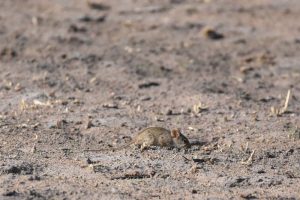
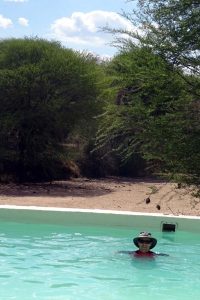
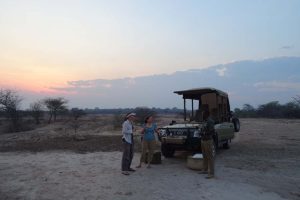

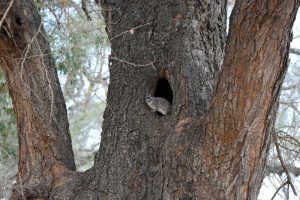
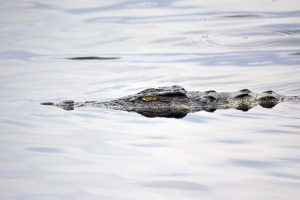
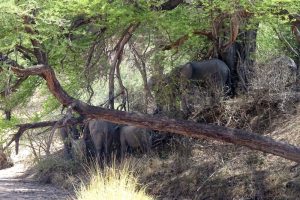

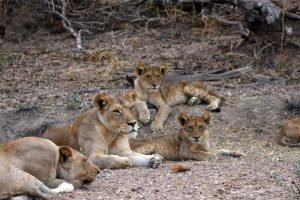
👍👍💋
🙂